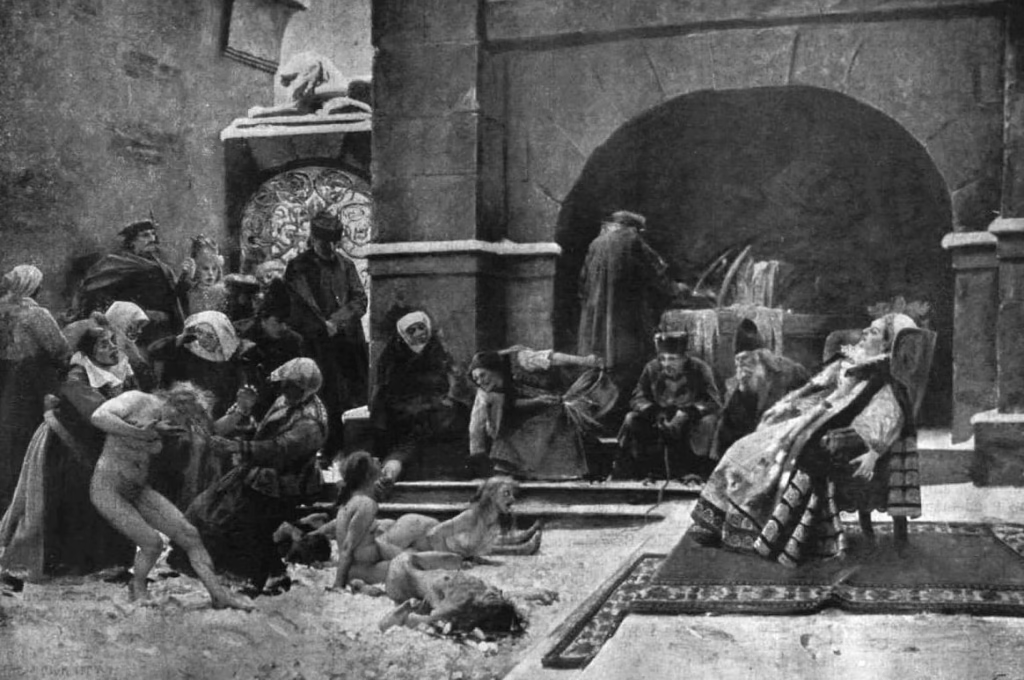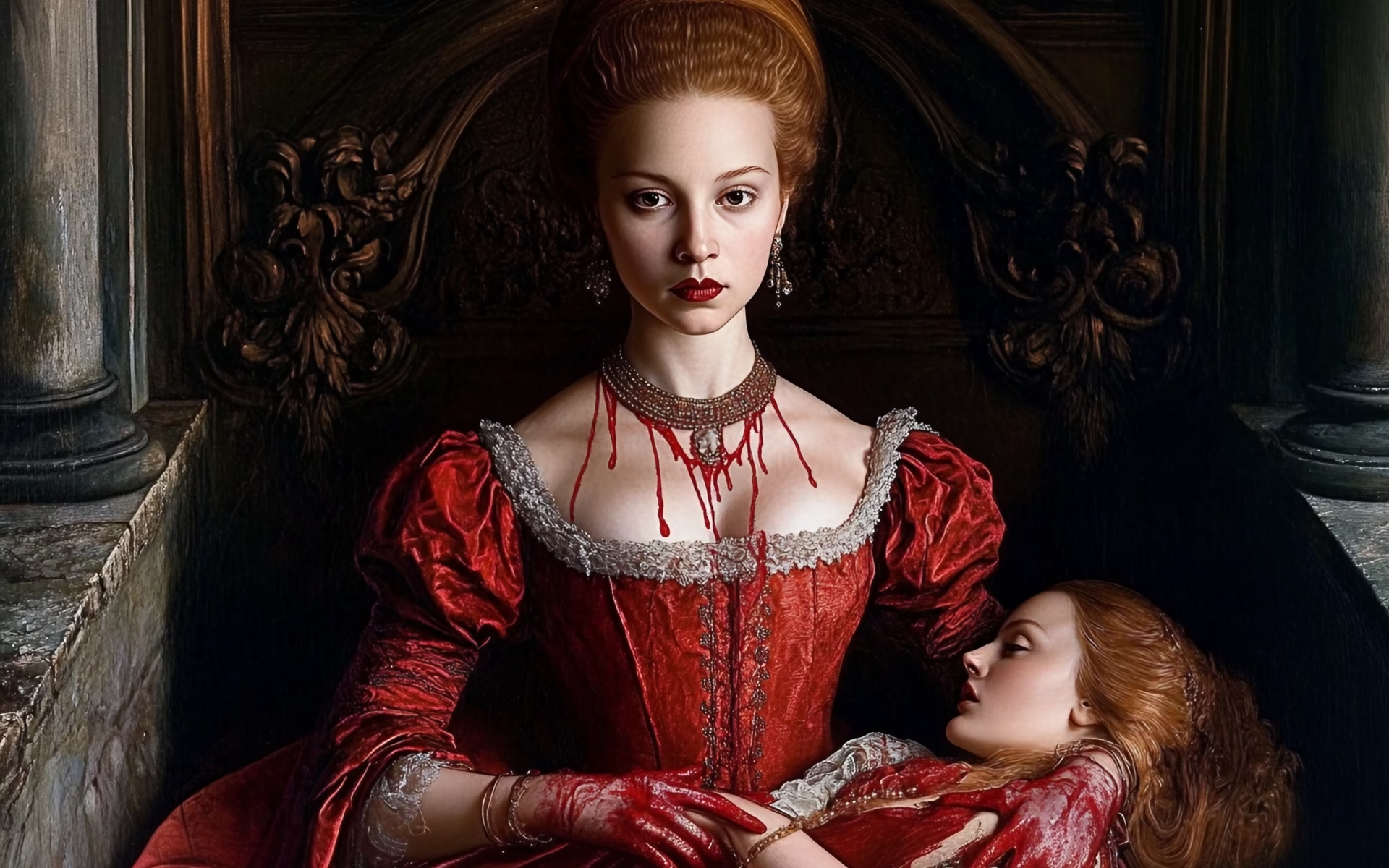A Noblewoman’s Dark World
On a crisp August morning in 1560, Elizabeth Bathory was born into the powerful Báthory family in Nyírbátor, Hungary. With kings and princes among her relatives, she grew up in privilege, schooled in languages, horseback riding, and the art of healing. But behind her noble education and graceful demeanor lay a mind that would become synonymous with terror.
At just thirteen, she was engaged to Count Ferenc Nádasdy. Their marriage in 1575 brought her to Čachtice Castle, perched in the misty hills of present-day Slovakia. There, in her new domain, Elizabeth’s fascination with beauty and youth began to twist into something dark.
The Crimes of the Blood Countess
From 1590 to 1610, Elizabeth Bathory’s obsession with eternal youth turned deadly. She hunted young women and girls, often peasants or servants under her control, and subjected them to brutal torture. She believed that bathing in their blood would preserve her own beauty, a practice that earned her the chilling title of The Blood Countess.
She would employ a range of horrifying methods: beating, burning, mutilation, and prolonged deprivation of food and water. Victims were reportedly forced to stand for hours, whipped, or confined in small, dark spaces. Some accounts even describe the use of hot irons and sharp instruments to inflict pain, all while Elizabeth observed, taking meticulous notes on their suffering. Her cruelty was calculated, a terrifying combination of sadism and obsession, leaving scars, both physical and psychological, on the region’s memory that would endure for centuries.
Her reign of terror came to a horrifying climax in December 1609. Count György Thurzo, acting on orders from King Matthias II, visited Čachtice Castle and uncovered Elizabeth personally overseeing the torment of her victims. The evidence was undeniable, and she was immediately confined, ending years of unspeakable cruelty.

Trial, Imprisonment, and Death
Elizabeth Bathory never faced a traditional trial. Instead, she was placed under house arrest, confined to her castle until her death in 1614. Historical records describe her as moving freely within the castle yet barred from leaving—a gilded cage where she would spend her remaining days haunted by her crimes.
The Legend Lives On
The tale of Elizabeth Bathory quickly spread across Europe, becoming a dark legend. Stories claimed she bathed in blood to remain young, though scholars debate the exact numbers and details. First chronicled in the 1729 Jesuit text Tragica Historia, her story inspired fear, fascination, and countless retellings in literature, art, and film.
She also found her way into pop culture. In the 1990s VHS board game Atmosfear, Elizabeth Bathory appeared as one of the iconic characters, terrorizing players alongside Baron Samedi, Anne de Chantraine, and others, bringing her legendary cruelty into living rooms worldwide. Her influence even extends to music, such as the heavy metal song “Countess Bathory” by Venom.

Why We Remember Her
Elizabeth Bathory’s story endures because it straddles the line between history and myth. She was a noblewoman, a killer, and a cultural icon whose obsession with beauty and control turned into a nightmare that echoed for centuries. From her blood-soaked castle to the pages of horror fiction, the Blood Countess reminds us that obsession and cruelty can create legends that haunt both history and imagination.



